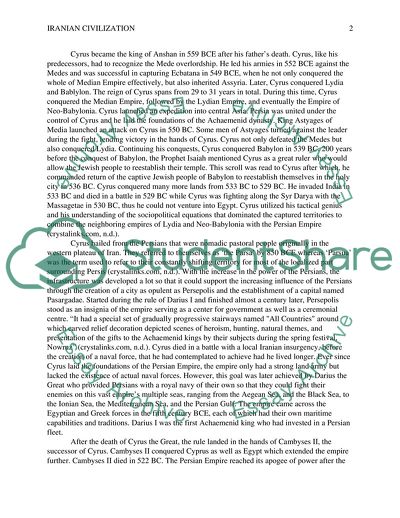Cite this document
(Specifics of Iranian Civilization Essay Example | Topics and Well Written Essays - 2250 words, n.d.)
Specifics of Iranian Civilization Essay Example | Topics and Well Written Essays - 2250 words. https://studentshare.org/history/1876365-iranian-civilization
Specifics of Iranian Civilization Essay Example | Topics and Well Written Essays - 2250 words. https://studentshare.org/history/1876365-iranian-civilization
(Specifics of Iranian Civilization Essay Example | Topics and Well Written Essays - 2250 Words)
Specifics of Iranian Civilization Essay Example | Topics and Well Written Essays - 2250 Words. https://studentshare.org/history/1876365-iranian-civilization.
Specifics of Iranian Civilization Essay Example | Topics and Well Written Essays - 2250 Words. https://studentshare.org/history/1876365-iranian-civilization.
“Specifics of Iranian Civilization Essay Example | Topics and Well Written Essays - 2250 Words”. https://studentshare.org/history/1876365-iranian-civilization.


